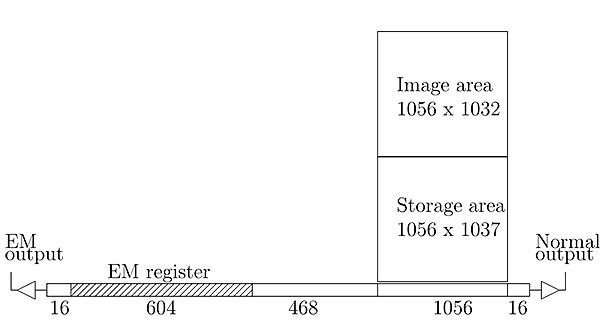Electron-multiplying CCDs at ING
ING web news release
27 October, 2010
Conventional CCD detectors have two major disadvantages: they are slow to read out and they
suffer from read noise. These problems combine to make high-speed spectroscopy of faint targets
the most demanding of astronomical observations. It is possible to overcome these weaknesses
by using electron-multiplying CCDs (EMCCDs). EMCCDs are conventional frame-transfer
CCDs, but with an extended serial register containing high-voltage electrodes. An avalanche
of secondary electrons is produced as the photon-generated electrons are clocked through this
register, resulting in signal amplification that renders the read noise negligible. Two such
cameras : QUCAM2 and QUCAM3 are now available for use on WHT/ISIS.
A combination of laboratory measurements with the QUCAM2 EMCCD camera and
Monte Carlo modelling, shows that it is possible to significantly increase the signal-to-noise
ratio of an observation using these cameras, but only if they are utilised correctly. Even greater gains are possible through the use of photon counting.
The recently released ING Technical Note No. 132 (Simon Tulloch, 2010) describes the performance of EMCCDs and presents a recipe
for astronomers to follow when setting up QUCAM2 and QUCAM3 on ISIS which ensures that
maximum signal-to-noise ratio is obtained.
 |
|
Schematic structure of the EMCCDs used in QUCAM2 and QUCAM3.
Photo-electrons produced in the image area are vertically clocked downwards, first into
the storage area, and then into the 1056-pixel serial register. For EMCCD operation,
the charge is then horizontally clocked leftwards, through the 468-pixel extended serial
register and into the 604-pixel EM register, before being measured and digitised at
the EM output. For conventional CCD operation, the charge in the serial register is
horizontally clocked rightwards to the normal output [ JPEG ].
|
More information:
|
|



